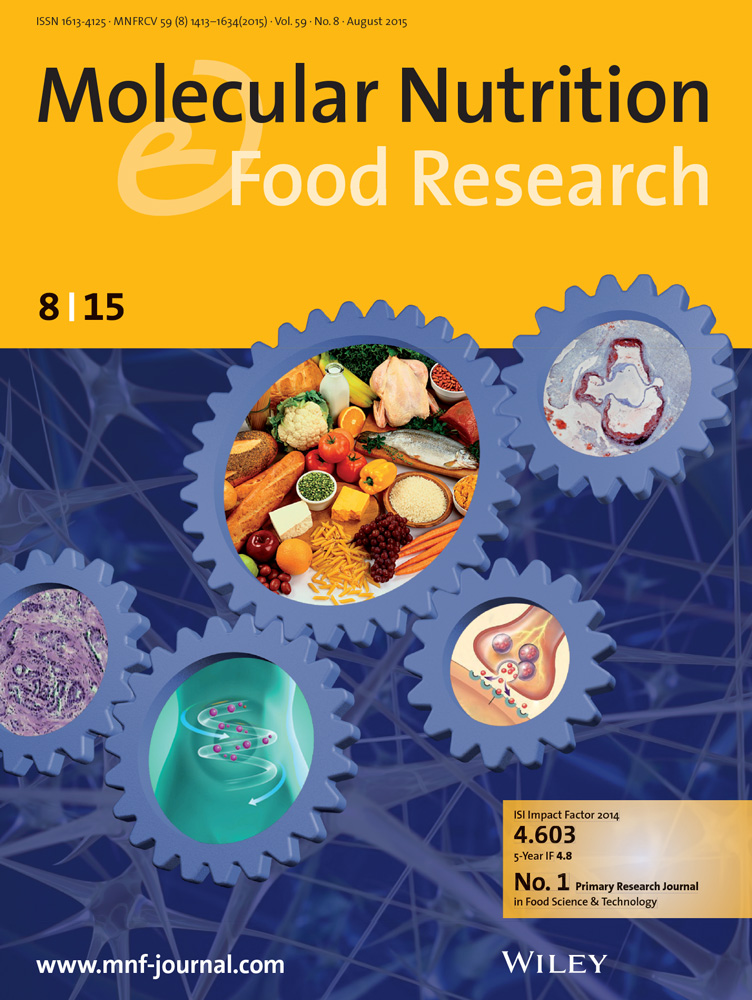Comparison of Low-Gluten Diets Rich in Oats or Rice-A 6-Week Randomized Clinical Trial With Metabolically Challenged Volunteers.
IF 4.5
2区 农林科学
Q1 FOOD SCIENCE & TECHNOLOGY
引用次数: 0
Abstract
Low-gluten diets (LGD) are also widely followed by people not suffering from coeliac disease. This study compared oats and rice as the main cereal source of an LGD in metabolically challenged volunteers. Volunteers (n = 69) were randomly assigned to an LGD, which was either rich in oats or rice, for 6 weeks. Before and after the intervention, concentrations of total cholesterol, LDL-C, and HDL-C, triacylglycerols, free fatty acids, glucose, and insulin were measured from fasting plasma samples; the volunteers also completed 4-day food and stool records, as well as questionnaires related to perceived gastrointestinal discomfort (Gastrointestinal Symptom Rating Scale) and health (RAND-36). The intervention with oats resulted in a more substantial decrease in LDL-C (pgroup × time = 0.047), more frequently normal type stool (pgroup × time = 0.010), and bowel movements (pgroup × time = 0.038) than rice (group × time interaction). The rice group experienced more constipation symptoms (pgroup × time < 0.001) than the oat group, possibly due to a lower fiber intake (pgroup × time < 0.001). A greater waist circumference decrease was observed with rice than with oats (pgroup × time = 0.022). Our results suggest that oats improve both biochemical markers of cardiometabolic health and perceived gastrointestinal well-being compared to rice, thus being a crucial part of a nutritiously adequate LGD.富含燕麦和大米的低麸质饮食的比较——代谢障碍志愿者6周随机临床试验
低麸质饮食(LGD)也广泛适用于没有乳糜泻的人。这项研究比较了燕麦和大米作为代谢障碍志愿者中LGD的主要谷物来源。志愿者(n = 69)被随机分配到富含燕麦或大米的低脂饮食中,为期6周。干预前后,测定空腹血浆样本中总胆固醇、LDL-C和HDL-C、三酰甘油、游离脂肪酸、葡萄糖和胰岛素的浓度;志愿者还完成了4天的食物和粪便记录,以及与感知胃肠道不适(胃肠道症状评定量表)和健康(RAND-36)相关的问卷调查。燕麦的干预导致LDL-C (p组×时间= 0.047)、更频繁的正常型大便(p组×时间= 0.010)和排便(p组×时间= 0.038)比大米(组×时间相互作用)的显著降低。与燕麦组相比,大米组出现了更多的便秘症状(p组×时间< 0.001),可能是由于纤维摄入量较低(p组×时间< 0.001)。与燕麦组相比,大米组的腰围减小幅度更大(p组×时间= 0.022)。我们的研究结果表明,与大米相比,燕麦改善了心脏代谢健康和胃肠道健康的生化指标,因此是营养充足的LGD的关键部分。
本文章由计算机程序翻译,如有差异,请以英文原文为准。
求助全文
约1分钟内获得全文
求助全文
来源期刊

Molecular Nutrition & Food Research
工程技术-食品科技
CiteScore
8.70
自引率
1.90%
发文量
250
审稿时长
1.7 months
期刊介绍:
Molecular Nutrition & Food Research is a primary research journal devoted to health, safety and all aspects of molecular nutrition such as nutritional biochemistry, nutrigenomics and metabolomics aiming to link the information arising from related disciplines:
Bioactivity: Nutritional and medical effects of food constituents including bioavailability and kinetics.
Immunology: Understanding the interactions of food and the immune system.
Microbiology: Food spoilage, food pathogens, chemical and physical approaches of fermented foods and novel microbial processes.
Chemistry: Isolation and analysis of bioactive food ingredients while considering environmental aspects.
 求助内容:
求助内容: 应助结果提醒方式:
应助结果提醒方式:


